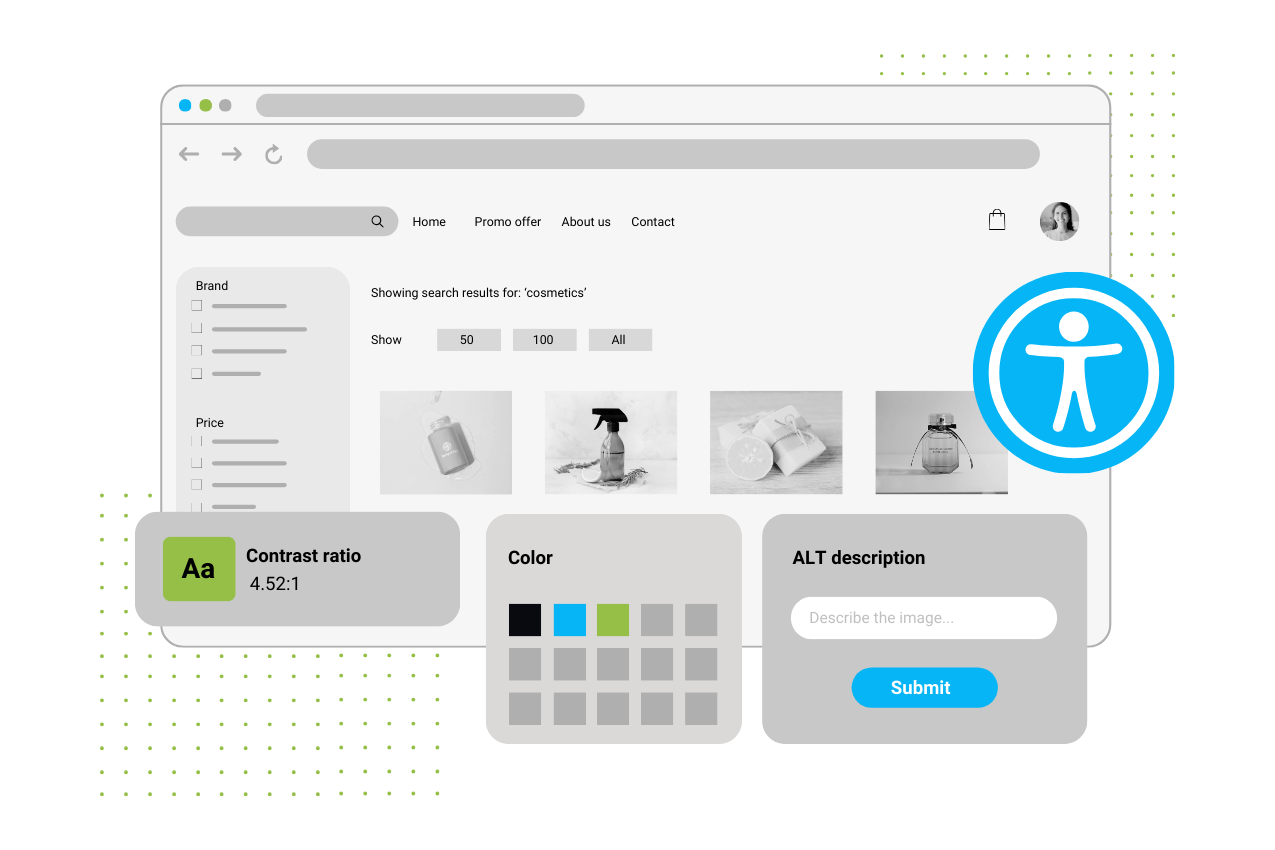Benefits of Website Accessibility
- Expanded audience reach. By making your website accessible, you open your digital doors to millions of potential users who might have been excluded due to accessibility barriers. Yes, people with disabilities are customers as well!
- Improved SEO performance. Accessible websites tend to have better search engine rankings because they provide a better user experience and meet various SEO best practices.
- Legal compliance and risk reduction. Ensuring your website is accessible reduces the risk of legal action for non-compliance with accessibility laws and regulations.
- Brand image. An accessible website demonstrates your commitment to inclusivity, improving your brand image and customer loyalty.

Primary regulations we’re guided by
- ADA (Americans with Disabilities Act) This act mandates that all digital properties, including ecommerce websites, offer accessible features such as adequate color contrast, alternative text for images, keyboard-friendly navigation, video captions, and audio content transcripts.
-
Section 508 A part of the Rehabilitation Act that requires federal agencies’ electronic and information technology to be accessible to people with disabilities, which includes elements like compatibility with assistive technology and adherence to established standards for web content.
- EN 301 549 Sets out accessibility requirements for ICT products and services in the European market. This includes user interface and content accessibility, ensuring that functionalities support assistive technologies, and providing alternatives for any non-text content.
- DDA (Disability Discrimination Act) This act requires that services provided by businesses, including ecommerce, be accessible to people with disabilities, suggesting a commitment to remove barriers that people with disabilities may face when accessing websites.
- WCAG (Web Content Accessibility Guidelines) Although not a law, WCAG is internationally recognized as the standard for web accessibility, and adherence is often required for compliance with the above regulations. It includes guidelines for text alternatives, time-based media, adaptable content, distinguishable content, keyboard accessible navigation, sufficient time for interactions, and error handling.












